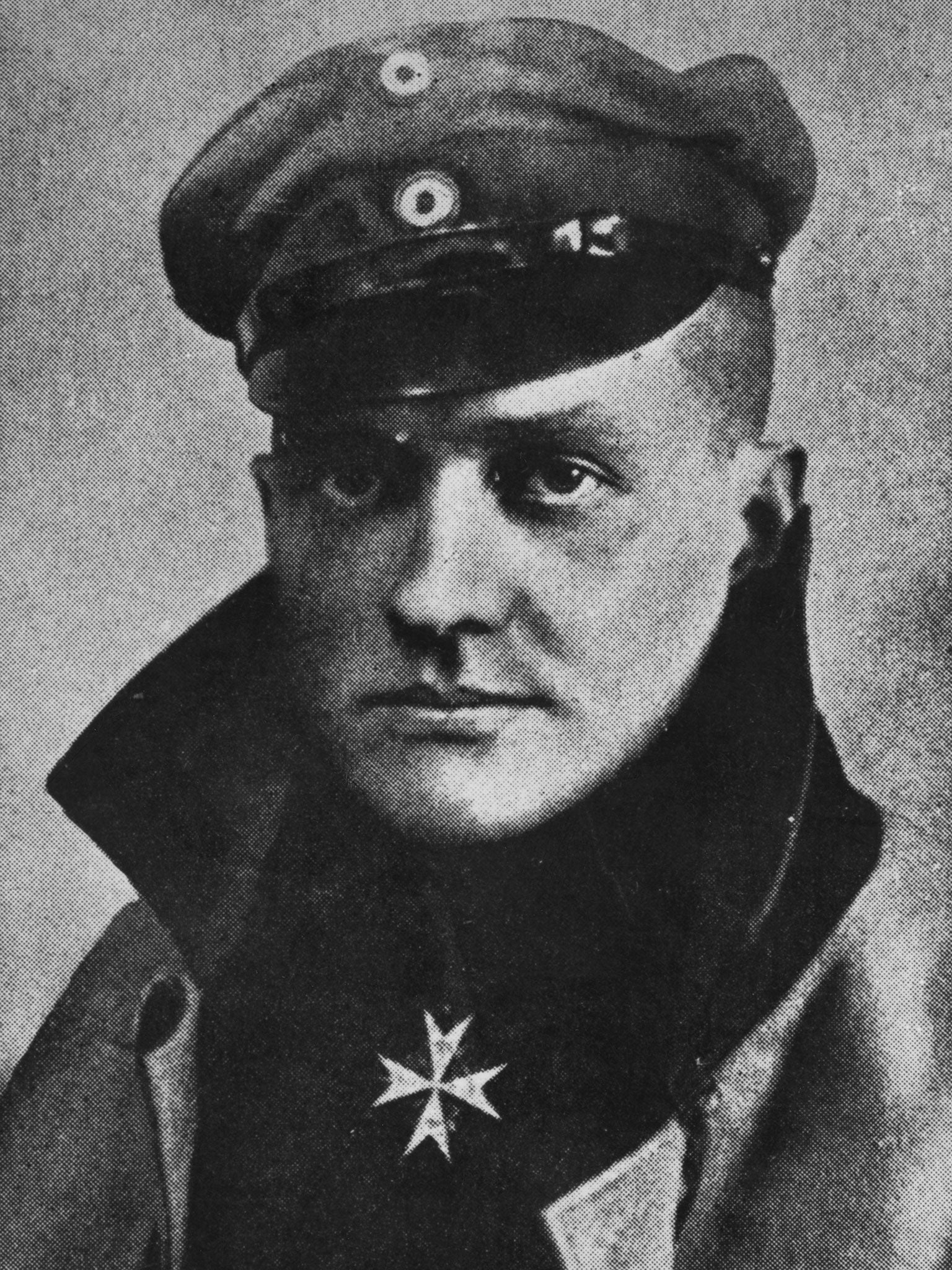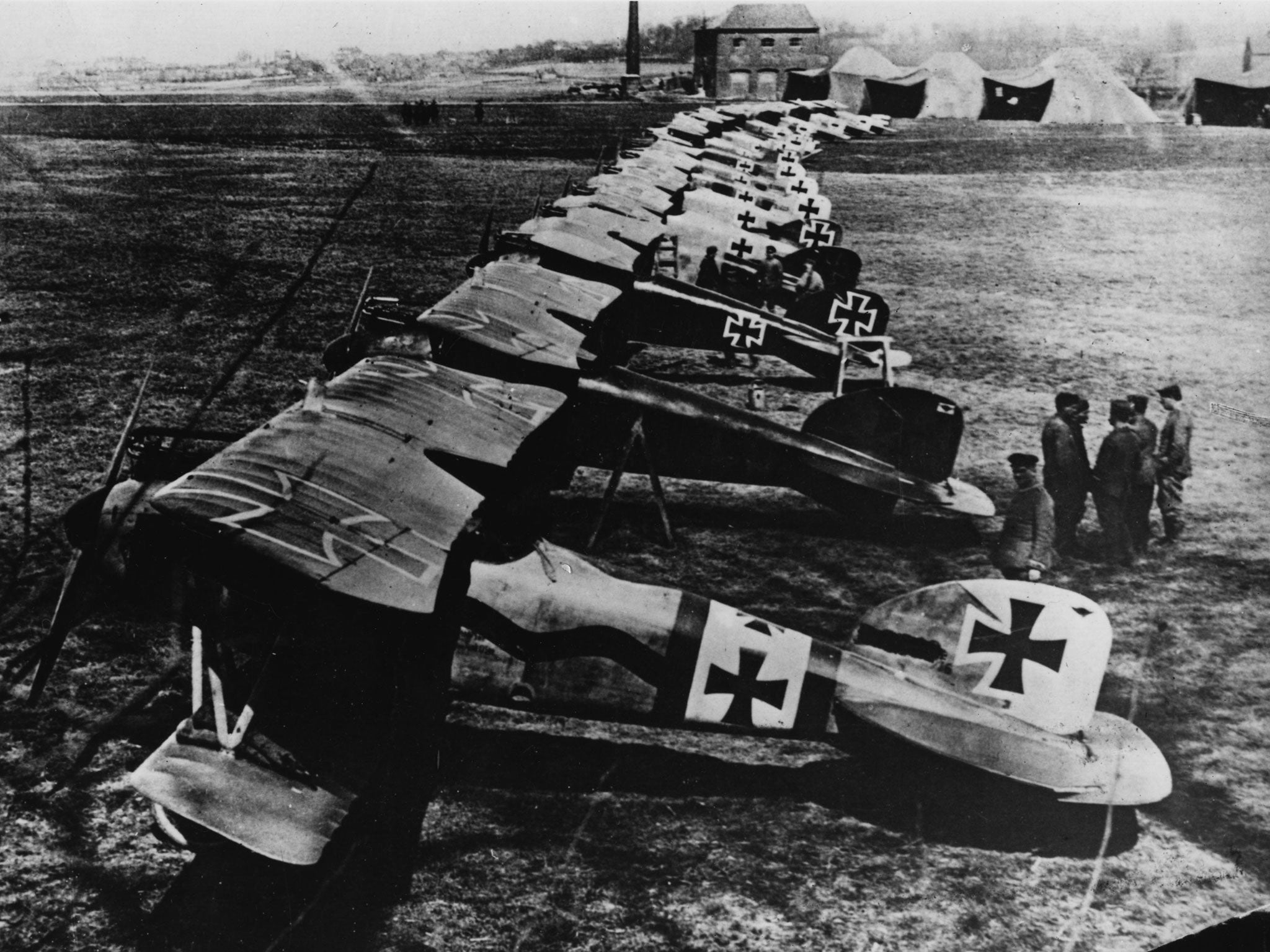A History of the First World War in 100 Moments: Honoured by both sides, German air ace the Red Baron is downed at last
Baron Manfred von Richthofen was the most celebrated air ace of any era. Cahal Milmo describes his death, and the extraordinary reactions it provoked in friend and foe alike

Your support helps us to tell the story
From reproductive rights to climate change to Big Tech, The Independent is on the ground when the story is developing. Whether it's investigating the financials of Elon Musk's pro-Trump PAC or producing our latest documentary, 'The A Word', which shines a light on the American women fighting for reproductive rights, we know how important it is to parse out the facts from the messaging.
At such a critical moment in US history, we need reporters on the ground. Your donation allows us to keep sending journalists to speak to both sides of the story.
The Independent is trusted by Americans across the entire political spectrum. And unlike many other quality news outlets, we choose not to lock Americans out of our reporting and analysis with paywalls. We believe quality journalism should be available to everyone, paid for by those who can afford it.
Your support makes all the difference.Shortly after 11am on 21 April 1918, Australian troops in the trenches near Vaux-sur-Somme witnessed a dogfight in the skies above them as a German tri-plane pursued a Royal Air Force Sopwith Camel barely 50ft off the ground.
On board his scarlet fighter, Manfred von Richthofen was ruthlessly pursuing his 81st kill of the First World War.
Canadian pilot Lieutenant Wilfrid May was doing his very best to avoid becoming the Red Baron’s latest victory. In a final, desperate attempt to help his comrade shake off the most famous and feared flying ace, Captain Roy Brown, a school friend of May, dived steeply in his state-of-the-art Sopwith and opened fire on Richthofen’s Fokker Dr1.
The Red Baron’s plane was seen to bank, wobble and then land clumsily – but intact – in a field behind Allied lines in northern France.
By the time Australian troops reached the plane, Richthofen – fatally wounded by a single bullet – was either dead or on the point of death. According to the account of one witness, a medic called Sergeant Ted Smout, the Prussian aristocrat and warrior enunciated just one word before expiring: “Kaputt.”
For the next 30 minutes the Allied soldiers had to take shelter as German artillery laid down a barrage in the hope of saving their national hero. Above, the planes of Richthofen’s Jagdeschwader 1 – his “Flying Circus” – circled as if to salute their fallen leader.
The Red Baron was no more. But the death of the single most lethal pilot of the war – whose propaganda value as an unassailable warrior was such that Berlin had become fond of reporting to Germans that the British had set up whole squadrons dedicated solely to shooting him down – gave birth to a number of enduring controversies.

The first concerned the vexed question of just who was responsible for firing the fatal shot.
The triumph was initially awarded by the newly founded RAF to Captain Brown. But more recent research suggests that Richthofen was killed by a bullet fired from the ground as his plane gave up the pursuit of Lieutenant May and circled back over the Allied lines.
Many now believe it was fired by Sergeant Cedric Popkin, an Australian anti-aircraft machine-gunner who opened up with his Vickers gun as Richthofen passed by at barely tree-top height.
This led to a second vexed question: what on earth was Germany’s shrewdest aviation tactician, a man who taught his pilots to attack from above with the sun behind them and to take no unnecessary risks, doing chasing an enemy plane within direct range of thousands of Allied soldiers who were all too eager to take a pot shot at an airborne legend?
One possible answer is that the Red Baron was still suffering the effects of a serious injury received a year earlier, when he had been shot in the head while flying.
Any other pilot with such serious injuries would probably have been grounded, but Richthofen was allowed to carry on flying. Neurologists now believe he may have been suffering impaired judgement and disinhibition.
Whatever the circumstances behind it, the death of the 25-year-old German nobleman cemented his status as a war hero.
His reputation was acknowledged by his opponents, who buried him with full military honours, including a guard of honour and a wreath inscribed with the words: “To our gallant and worthy foe.”
Tomorrow: The heroism of an old English sheepdog
The '100 Moments' already published can be seen at: independent.co.uk/greatwar
Join our commenting forum
Join thought-provoking conversations, follow other Independent readers and see their replies
Comments